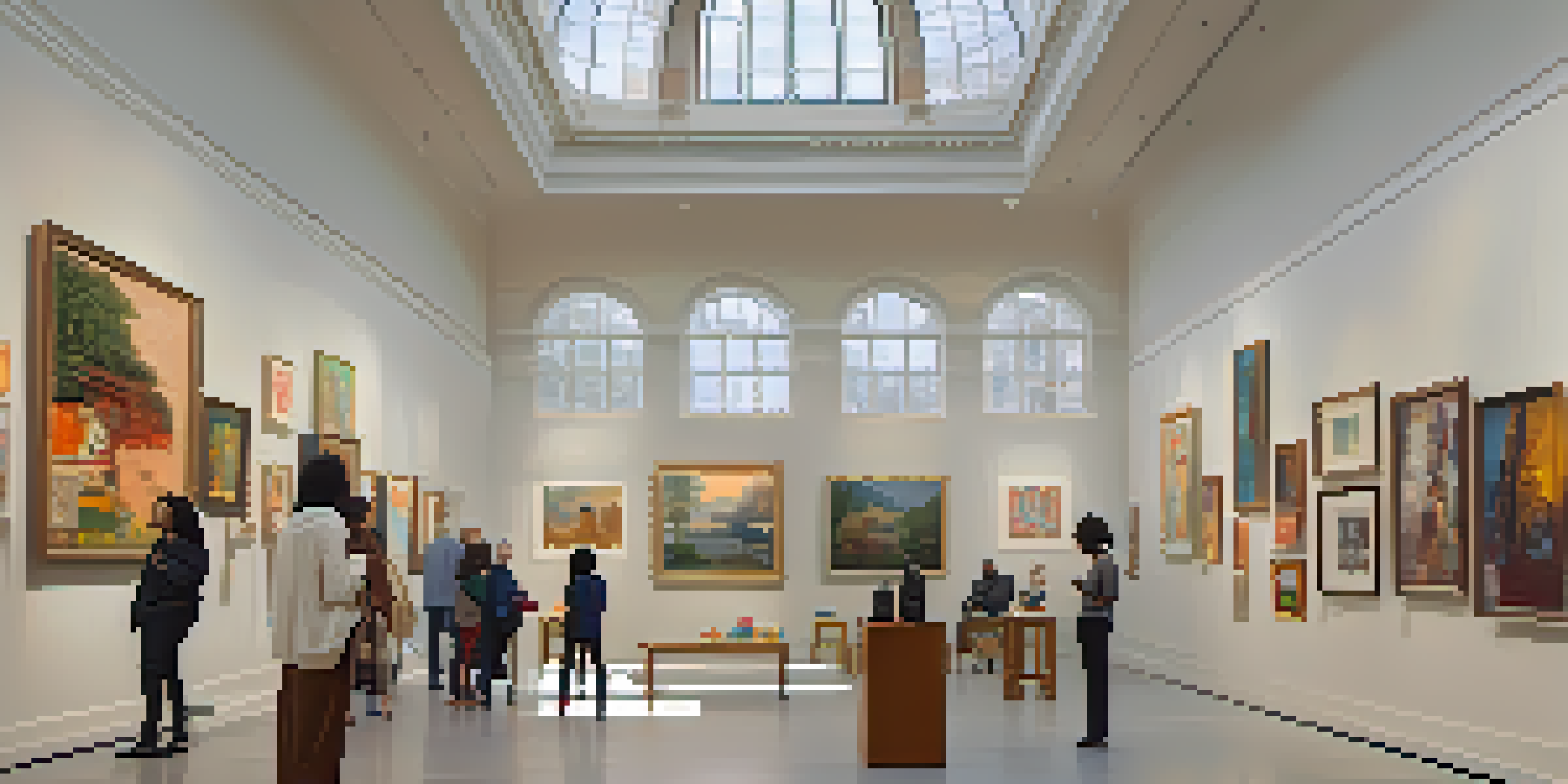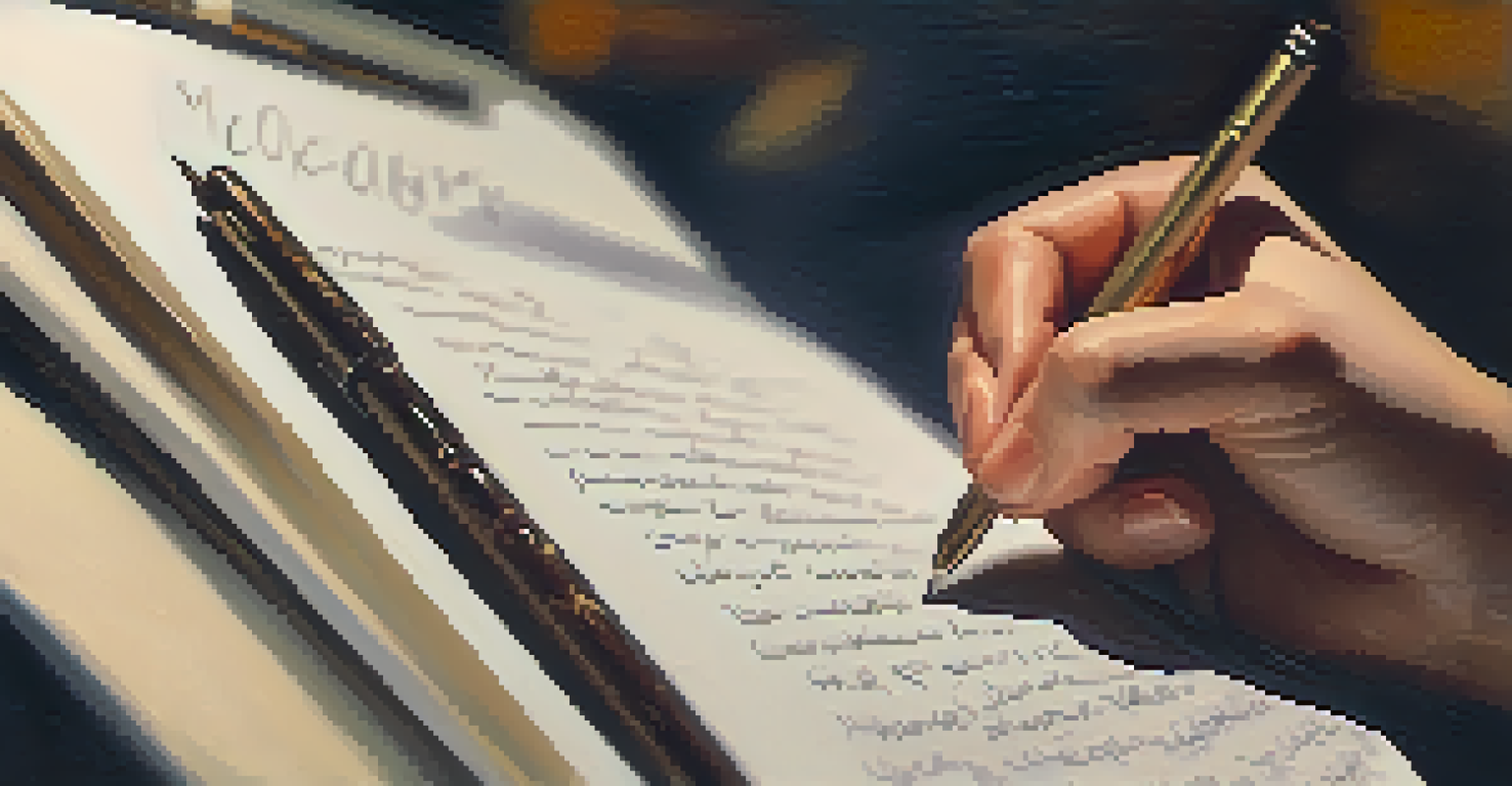Ethics in Art Criticism: Impact on Artists and Audiences

Understanding Art Criticism and Its Ethical Dimensions
Art criticism plays a pivotal role in shaping public perception of art. It involves analyzing and evaluating artwork, but ethics comes into play when considering the impact of these evaluations. Critics wield significant power in influencing how art is received, which raises questions about responsibility and fairness.
Art is not freedom from discipline, but disciplined freedom.
Ethics in art criticism refers to the moral principles that guide critics in their evaluations. This includes honesty, integrity, and an understanding of the artist's context. For instance, a critic may need to consider personal biases that could color their judgment, ensuring a fair appraisal of the artwork.
Moreover, ethical art criticism promotes transparency, allowing audiences to understand the criteria behind critiques. This transparency can foster trust between artists and critics, helping to create a more inclusive art community where diverse perspectives are valued.
The Impact of Criticism on Artists' Careers
Critics can significantly influence an artist's career trajectory, often acting as gatekeepers to success. A positive review can propel an artist into the spotlight, while a harsh critique can hinder their opportunities. This power dynamic raises ethical questions about the responsibility critics have in their assessments.

For instance, consider an emerging artist whose work is dismissed by a prominent critic. This dismissal could discourage the artist, leading them to abandon their craft. On the flip side, a supportive review can encourage artists to take creative risks, fostering innovation and growth.
Ethics Shape Art Criticism
Critics must navigate their moral responsibilities to ensure fair and honest evaluations that promote trust in the art community.
Critics must balance their assessments with the potential consequences for artists. By providing constructive feedback rather than merely negative commentary, critics can help artists improve while also supporting their artistic journeys.
Audience Perception Shaped by Art Criticism
The audience’s understanding of art is frequently shaped by critics’ opinions. When a critic praises a piece, audiences are likely to approach it with optimism, while negative reviews can lead to skepticism. This ripple effect illustrates how influential critics are in shaping public discourse around art.
Criticism is something we can avoid easily by saying nothing, doing nothing, and being nothing.
For example, a widely read critic may describe a piece as groundbreaking, prompting viewers to engage with it more deeply. Conversely, if the same work is labeled as uninspired, it may deter potential admirers. This tendency highlights the ethical obligation critics have to communicate thoughtfully and constructively.
Understanding the power of their words, critics should strive to educate their audiences rather than merely express personal taste. By fostering an appreciation of diverse artistic expressions, they can help cultivate a more informed and open-minded audience.
The Role of Social Media in Art Criticism Dynamics
In today's digital age, social media has transformed the landscape of art criticism. Platforms like Instagram and Twitter allow critics and audiences to engage in real-time discussions about artwork. However, this immediacy can sometimes lead to impulsive judgments that lack depth or context.
Critics now face the challenge of navigating public opinion while maintaining their ethical standards. A tweet or post can quickly go viral, amplifying both praise and condemnation. This rapid feedback loop can pressure critics to prioritize sensationalism over thoughtful critique.
Critics Influence Artist Success
A critic's review can significantly impact an artist's career, highlighting the need for constructive feedback over harsh criticism.
Moreover, social media democratizes art criticism, giving voices to a broader range of individuals. However, this also raises questions about the credibility and qualifications of those offering critiques. Striking a balance between diverse perspectives and expert evaluations is essential for maintaining ethical standards in this new landscape.
The Importance of Diversity in Art Criticism
Diversity in art criticism is crucial for a comprehensive understanding of artwork. Different cultural backgrounds, experiences, and perspectives can enrich critiques, offering audiences a more nuanced view of art. This diversity also encourages a broader range of voices in the conversation, which is essential for an inclusive art community.
When critics come from varied backgrounds, they can highlight aspects of art that others might overlook. For instance, an artist's cultural heritage can significantly inform their work, and critics who recognize this context can provide deeper insights. This approach fosters appreciation for the richness of artistic expression across different cultures.
However, the art criticism field has historically lacked representation. Addressing this imbalance is an ethical imperative, as it ensures that all artists have the opportunity to be understood and appreciated. By promoting diversity, critics can help cultivate an art world that reflects the richness of human experience.
Navigating Conflicts of Interest in Art Criticism
Conflicts of interest can pose significant ethical dilemmas for art critics. When critics have personal or financial ties to an artist or gallery, their objectivity may be compromised. This raises concerns about the integrity of their critiques and the potential manipulation of public perception.
For instance, if a critic is an artist's close friend, their review may lean towards favoritism rather than impartial assessment. This can create mistrust among audiences, who may question the validity of the critique. Critics must navigate these situations with transparency and honesty to maintain credibility.
Diversity Enriches Critique
Incorporating diverse perspectives in art criticism fosters a more comprehensive understanding of artwork and supports an inclusive art community.
Establishing clear guidelines and disclosing any potential conflicts can help mitigate these issues. By prioritizing transparency, critics can uphold ethical standards and ensure that their assessments are viewed as fair and trustworthy by both artists and audiences.
The Future of Ethical Art Criticism
Looking ahead, the future of art criticism will likely continue to evolve alongside societal changes. As audiences become more discerning and informed, critics will need to adapt their approaches to meet these expectations. Ethical considerations will remain at the forefront of this evolution.
Emerging technologies, like virtual reality and AI, will also influence how art is experienced and critiqued. Critics will need to navigate these new formats while maintaining their ethical commitments. This adaptability will be crucial in fostering a rich dialogue around contemporary art practices.

Ultimately, the future of ethical art criticism hinges on collaboration and open discourse. By encouraging diverse voices and perspectives, the art world can cultivate a more inclusive environment that supports both artists and audiences, paving the way for a vibrant artistic community.